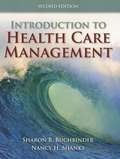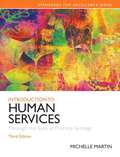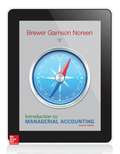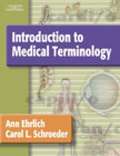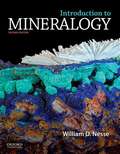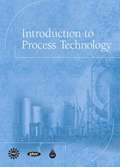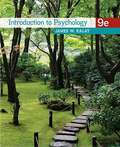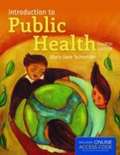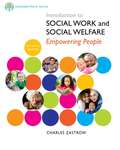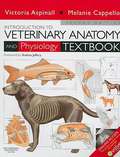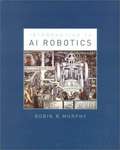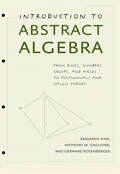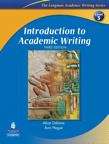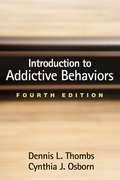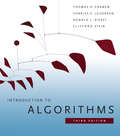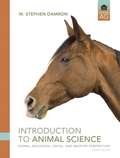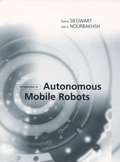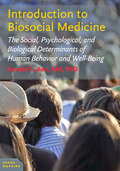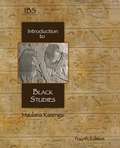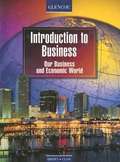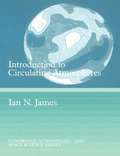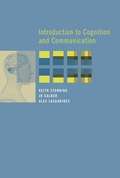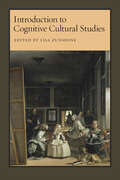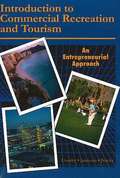- Table View
- List View
Introducing World Religions
by Victoria Kennick UrubshurowIntroducing World Religions offers an exciting new approach to the study of world religions. It explores the main religions of both East and West, situating them in a cross-cultural context and using a powerful dramatic metaphor to bring them alive for students. Ideal for one-semester or modular introductory survey courses, Introducing World Religions will be essential reading for any student of religions, worldwide.
Introduction To Health Care Management
by Sharon B. Buchbinder Nancy H. ShanksIntroduction to Health Care Management is a concise, reader-friendly, introductory healthcare management book that covers a wide variety of healthcare settings, from hospitals to nursing homes and clinics. Filled with examples to engage the reader's imagination, the important issues in healthcare management, such as ethics, cost management, strategic planning and marketing, information technology, and human resources, are all thoroughly covered. Guidelines and rubrics along with numerous case studies make this text both student-friendly and teacher friendly. It is the perfect resource for students of healthcare management, nursing, allied health, business administration, pharmacy, occupational therapy, public administration, and public health. "Drs. Buchbinder and Shanks have done a masterful job in selecting topics and authors and putting them together in a meaningful and coherent manner. Each chapter of the book is designed to give the student the core content that must become part of the repertoire of each and every healthcare manager, whether entry level or senior executive. Each of the chapters and accompanying cases serve to bring to life what it means to be a truly competent healthcare manager.
Introduction To Human Services: Through The Eyes Of Practice Settings
by Michelle E. MartinProvides readers with an understanding of the Human Services Profession. Introduction to Human Services: Through the Eyes of Practice Settings, 3/e explores human services through the lens of the most common practice settings where human service professionals work. This title also provides information about social problems within a socio-political context allowing readers to think about ways in which culture and ideology influence people's perspectives. Standards for Excellence series -- Each chapter highlights the national standards set by the Council for Standards in Human Service Education (CSHSE). Critical thinking questions throughout reinforces this integration. Learning Goals Upon completing this book, readers will be able to: Understand the issues pertinent to human services from new perspectives. Challenge the status quo of human services. Recognize their own stereotypical thinking that may create barriers to becoming effective helpers.
Introduction To Managerial Accounting 7th Edition
by Eric W. Noreen Ray H. Garrison Peter C. BrewerIntroduction to Managerial Accounting, 7/e by Brewer/Garrison/Noreen is based on the market-leading text, Managerial Accounting, by Garrison, Noreen and Brewer. The 7e is a briefer, more accessible, and thoroughly student-friendly text that satisfies the basic needs of the managerial accounting student without unnecessary depth on advanced topics associated with the follow-up course cost accounting/cost management. Faculty and students alike will find this new edition has retained the hallmark features of the Garrison brand: author-written supplements, excellent readability, terrific examples, and balanced end-of-chapter material.
Introduction To Medical Terminology
by Ann Ehrlich Carol L. Schroeder Ann Roe-HaferThis undergraduate textbook describes the structure and function of the 12 systems that make up the human body, defines each system's pathology, and overviews the primary diagnostic and treatment procedures performed. Color illustrations are provided. The CD- ROM contains exercises and games. Annotation (c)2003 Book News, Inc. , Portland, OR (booknews. com)
Introduction To Mineralogy
by William NesseThe second edition of Introduction to Mineralogy follows the highly successful first edition, which become an overnight market leader. Introduction to Mineralogy consolidates much of the material now covered in traditional mineralogy and optical mineralogy courses and focuses on describing minerals within their geologic context. It presents the important traditional content of mineralogy including crystallography, chemical bonding, controls on mineral structure, mineral stability, and crystal growth to provide a foundation that enables students to understand the nature and occurrence of minerals. Physical, optical, and X-ray powder diffraction techniques of mineral study are described in detail, and common chemical analytical methods are outlined as well. Detailed descriptions of over 100 common minerals are provided, and the geologic context within which these minerals occur is emphasized. Appendices provide tables and diagrams to help students with mineral identification, using both physical and optical properties. Numerous line drawings, photographs, and photomicrographs help make complex concepts understandable. Introduction to Mineralogy is available with Daniel Schulze's An Atlas of Minerals in Thin Section for a nominal additional fee. NEW TO THIS EDITION: -New 2-color design to clarify information hierarchy and presentation -Expanded selection of mineral photos -Improved presentation of physical properties of minerals in chapter 1 -Updated mineral descriptions -New coverage of minerals and health
Introduction To Process Technology
by Center For The Advancement Of Process TechnologyA 29 chapter textbook intended for use in high schools, community colleges, technical colleges, and universities which offer introductory process technology courses. Introduction to Process Technology provides the learner an overview of process technology. This text includes a variety of topics including, an overview of various process industries (oil and gas, chemical, mining, power generation, pulp and paper, water and waste water treatment, food and beverage, and pharmaceutical), basic chemistry, basic physics, safety, health, environment and security, quality, process drawings, and process equipment. Each chapter contains objectives, key terms, a summary, review questions and activities to enhance the learning experience. This text is appropriate for high schools, community colleges, technical colleges, and universities that offer introductory process technology courses.
Introduction To Psychology 9th Ed
by James W. KalatJames Kalat's best-selling INTRODUCTION TO PSYCHOLOGY does far more than cover major theories and studies; it encourages you to question the information and ask yourself, "How was this conclusion reached?" and "Does the evidence really support it?" In this student-praised text, Kalat challenges your preconceptions about psychology to help you become a more informed consumer of information not only during your college experience but also as you venture into your post-college life. With his humorous writing style and hands-on "Try It Yourself" exercises, Kalat puts you at ease and gets you involved with what you are studying so that you can succeed in your course.
Introduction To Public Health 4th Edition
by Mary-Jane SchneiderIntroduction to Public Health, Fourth Edition offers a thorough, accessible overview of the expanding field of public health for students new to its concepts and actors. Written in engaging, nontechnical language, this best-selling text explains in clear terms the multi-disciplinary strategies and methods used for measuring, assessing, and promoting public health. Packed with illustrative real-world examples, this updated edition provides students with informative discussions of the current technical issues and practical obstacles facing public health practitioners and policymakers alike. Through coverage of new approaches to research and data collection, current best practices in the field, and the social and ethical challenges of devising public policy, Introduction to Public Health, Fourth Edition provides readers with a broad-reaching, practical framework for understanding the multifaceted forces and organizations of today's public health enterprise.
Introduction To Social Work And Social Welfare
by Charles ZastrowThe bestselling introductory Social Work book on the market, Zastrow's INTRODUCTION TO SOCIAL WORK AND SOCIAL WELFARE: EMPOWERING PEOPLE, 11th Edition, is also lauded for being the most comprehensive. In addition to giving readers a thorough overview of the social work profession, this text offers a realistic view of social problems in contemporary society, equipping students with real-world insight that they can apply in practice. By presenting positive strategies in the context of the core values, ethics, skills, and knowledge base of today's professional social worker, Zastrow encourages readers to think critically about new, workable methods for problem-solving and empowering clients. Contemporary social problems case studies, exhibits, and tables help users apply concepts and compare and contrast issues. The Eleventh Edition has been thoroughly updated to include the latest NASW Standards, as well as new and emerging issues from the field. Packed with cutting-edge coverage and comprehensive CSWE core content, INTRODUCTION TO SOCIAL WORK AND SOCIAL WELFARE: EMPOWERING PEOPLE, 11th Edition, continues to inspire readers while giving them insight into real-world practice.
Introduction To Veterinary Anatomy And Physiology Textbook
by Victoria Aspinall Melanie CappelloA sound knowledge of anatomy and physiology is an essential basis for the effective clinical treatment of companion animals. The new Introduction to Veterinary Anatomy and Physiology Textbook builds on the success of the first edition in its thorough coverage of the common companion animal species. Updated throughout, the new edition features online learning resources, providing students with the opportunity to test their knowledge with questions and visual exercises, while instructors can download questions, figures and exercises to use as teaching aids. An essential first purchase for all those embarking upon a veterinary career Now with on-line resources including self-assessment tools and teaching aids Comprehensive coverage of all major companion animal species New equine chapter 'Applied Anatomy' tips relate theory to clinical practice, showing the relationship between anatomy and physiology and the disease process
Introduction to AI Robotics
by Robin R. MurphyThis text covers all the material needed to understand the principles behind the AI approach to robotics and to program an artificially intelligent robot for applications involving sensing, navigation, planning, and uncertainty. Robin Murphy is extremely effective at combining theoretical and practical rigor with a light narrative touch. In the overview, for example, she touches upon anthropomorphic robots from classic films and science fiction stories before delving into the nuts and bolts of organizing intelligence in robots. Following the overview, Murphy contrasts AI and engineering approaches and discusses what she calls the three paradigms of AI robotics: hierarchical, reactive, and hybrid deliberative/reactive. Later chapters explore multiagent scenarios, navigation and path-planning for mobile robots, and the basics of computer vision and range sensing. Each chapter includes objectives, review questions, and exercises. Many chapters contain one or more case studies showing how the concepts were implemented on real robots. Murphy, who is well known for her classroom teaching, conveys the intellectual adventure of mastering complex theoretical and technical material.
Introduction to Abstract Algebra: From Rings, Numbers, Groups, and Fields to Polynomials and Galois Theory
by Benjamin Fine Gerhard Rosenberger Anthony M. GaglioneA new approach to abstract algebra that eases student anxieties by building on fundamentals.Introduction to Abstract Algebra presents a breakthrough approach to teaching one of math's most intimidating concepts. Avoiding the pitfalls common in the standard textbooks, Benjamin Fine, Anthony M. Gaglione, and Gerhard Rosenberger set a pace that allows beginner-level students to follow the progression from familiar topics such as rings, numbers, and groups to more difficult concepts. Classroom tested and revised until students achieved consistent, positive results, this textbook is designed to keep students focused as they learn complex topics. Fine, Gaglione, and Rosenberger's clear explanations prevent students from getting lost as they move deeper and deeper into areas such as abelian groups, fields, and Galois theory. This textbook will help bring about the day when abstract algebra no longer creates intense anxiety but instead challenges students to fully grasp the meaning and power of the approach. Topics covered include:• Rings• Integral domains• The fundamental theorem of arithmetic• Fields• Groups• Lagrange's theorem• Isomorphism theorems for groups• Fundamental theorem of finite abelian groups• The simplicity of An for n5• Sylow theorems• The Jordan-Hölder theorem• Ring isomorphism theorems• Euclidean domains• Principal ideal domains• The fundamental theorem of algebra• Vector spaces• Algebras• Field extensions: algebraic and transcendental• The fundamental theorem of Galois theory• The insolvability of the quintic
Introduction to Academic Writing
by Ann Hogue Alice OshimaThe Third Edition of Introduction to Academic Writing, by Alice Oshima and Ann Hogue, continues in the tradition of helping students to master the standard organizational patterns of the paragraph and the basic concepts of essay writing. The text's time-proven approach integrates the study of rhetorical patterns and the writing process with extensive practice in sentence structure and mechanics. Features of the Third Edition: A step-by-step approach guides students seamlessly through the process of writing. Clear, succinct explanations help students to understand and apply key concepts and rules. Numerous models and varied practice support students at all stages of writing. NEW instruction and practice in summary writing prepare students for academic work. NEW Try It Out! exercises give students opportunities to assess mastery of skills. NEWself-editing and peer-editing worksheets motivate students to revise their work. Introduction to Academic Writing is also available with CriterionSM Publisher's Version, which provides instant online feedback on student writing: Students simply submit their writing online and instantly receive personalized feedback on: Grammar, Usage, Style, Mechanics, Organization, and Development (essays only). Students can turn in better writing, and teachers can save time spent correcting drafts. Clickon the "Resources" link to order the edition with CriterionSM Publisher's Version The Longman Academic Writing Series consists of: Level 1 Fundamentals of Academic Writing Level 2 First Steps in Academic Writing, Second Edition Level 4 Writing Academic English, Fourth Edition.
Introduction to Addictive Behaviors (4th Edition)
by Dennis L. Thombs Cynthia J. OsbornThis widely adopted text introduces students and practitioners to major contemporary models of addiction. Assuming no prior knowledge in the field, the book shows how theory and research can offer a roadmap for effective intervention. It presents multiple perspectives on the causes and mechanisms of substance use problems, reviews their strengths and limitations, and examines their implications for helping people change their behavior. Evidence-based treatment and prevention strategies are described.Pedagogical Features Include:*Accessible style and clear organization.*Concise end-of-chapter summaries.*Review questions in every chapter.New to This Edition*The latest research on prevention and treatment, including current data and revised discussions of genetic influences, family treatment models, and many other topics.*Updated for DSM-5.*Chapter on behavioral addictions.*Chapter on promoting motivation and autonomy.*Chapter on evidence-based practice.
Introduction to Algorithms, third edition (The\mit Press Ser.)
by Clifford Stein Thomas H. Cormen Charles E. Leiserson Ronald L. RivestThe latest edition of the essential text and professional reference, with substantial new material on such topics as vEB trees, multithreaded algorithms, dynamic programming, and edge-based flow.Some books on algorithms are rigorous but incomplete; others cover masses of material but lack rigor. Introduction to Algorithms uniquely combines rigor and comprehensiveness. The book covers a broad range of algorithms in depth, yet makes their design and analysis accessible to all levels of readers. Each chapter is relatively self-contained and can be used as a unit of study. The algorithms are described in English and in a pseudocode designed to be readable by anyone who has done a little programming. The explanations have been kept elementary without sacrificing depth of coverage or mathematical rigor.The first edition became a widely used text in universities worldwide as well as the standard reference for professionals. The second edition featured new chapters on the role of algorithms, probabilistic analysis and randomized algorithms, and linear programming. The third edition has been revised and updated throughout. It includes two completely new chapters, on van Emde Boas trees and multithreaded algorithms, substantial additions to the chapter on recurrence (now called “Divide-and-Conquer”), and an appendix on matrices. It features improved treatment of dynamic programming and greedy algorithms and a new notion of edge-based flow in the material on flow networks. Many exercises and problems have been added for this edition. The international paperback edition is no longer available; the hardcover is available worldwide.
Introduction to Animal Science: Global, Biological, Social, and Industry Perspectives (Fourth Edition)
by W. Stephen DamronIntroduction to Animal Science: Global, Biological, Social and Industry Perspectives, 4efeatures the most comprehensive, up-to-date coverage of the traditional disciplines that are so essential to a solid foundation in Animal Science: nutrition, digestion, feeds, genetics, reproduction, disease, and animal behavior. Species-focused chapters include the major species (horse, dairy cattle, beef cattle, sheep, goat, poultry, and swine) and the minor species (aquaculture, pets/companion animals, the lamoids, and rabbits).
Introduction to Autonomous Mobile Robots
by Roland Siegwart Illah Reza NourbakhshMobile robots range from the teleoperated Sojourner on the Mars Pathfinder mission to cleaning robots in the Paris Metro. Introduction to Autonomous Mobile Robots offers students and other interested readers an overview of the technology of mobility--the mechanisms that allow a mobile robot to move through a real world environment to perform its tasks--including locomotion, sensing, localization, and motion planning. It discusses all facets of mobile robotics, including hardware design, wheel design, kinematics analysis, sensors and perception, localization, mapping, and robot control architectures. The design of any successful robot involves the integration of many different disciplines, among them kinematics, signal analysis, information theory, artificial intelligence, and probability theory. Reflecting this, the book presents the techniques and technology that enable mobility in a series of interacting modules. Each chapter covers a different aspect of mobility, as the book moves from low-level to high-level details. The first two chapters explore low-level locomotory ability, examining robots' wheels and legs and the principles of kinematics. This is followed by an in-depth view of perception, including descriptions of many "off-the-shelf" sensors and an analysis of the interpretation of sensed data. The final two chapters consider the higher-level challenges of localization and cognition, discussing successful localization strategies, autonomous mapping, and navigation competence. Bringing together all aspects of mobile robotics into one volume, Introduction to Autonomous Mobile Robots can serve as a textbook for coursework or a working tool for beginners in the field.
Introduction to Biosocial Medicine: The Social, Psychological, and Biological Determinants of Human Behavior and Well-Being
by Donald A. BarrUnderstanding human behavior is essential if medical students and doctors are to provide more effective health care.While 40 percent of premature deaths in the United States can be attributed to such dangerous behaviors as smoking, overeating, inactivity, and drug or alcohol use, medical education has generally failed to address how these behaviors are influenced by social forces. This new textbook from Dr. Donald A. Barr was designed in response to the growing recognition that physicians need to understand the biosocial sciences behind human behavior in order to be effective practitioners. Introduction to Biosocial Medicine explains the determinants of human behavior and the overwhelming impact of behavior on health. Drawing on both recent and historical research, the book combines the study of the biology of humans with the social and psychological aspects of human behavior. Dr. Barr, a sociologist as well as physician, illustrates how the biology of neurons, the intricacies of the human mind, and the power of broad social forces all influence individual perceptions and responses. Addressing the enormous potential of interventions from medical and public health professionals to alter these patterns of human behavior over time, Introduction to Biosocial Medicine brings necessary depth and perspective to medical training and education.
Introduction to Black Studies (4th Edition)
by Maulana KarengaA comprehensive textbook that covers Black/African American studies across a variety of academic disciplines.
Introduction to Business: Our Business and Economic World
by Betty J. Brown John E. Clow Mcgraw-Hill StaffFrom entrepreneurship to the global economy, Introduction to Business introduces your students to the ever-changing world of business and economics. It's up-to-date, full of high interest features, and designed to help your students explore business opportunities while learning to make their own informed economic decisions.
Introduction to Circulating Atmospheres
by Alexander J. Dessler John T. Houghton Michael J. Rycroft Ian N. JamesThis book gives an account of the modern view of the global circulation of the atmosphere. It brings the observed nature of the circulation together with theories and simple models of the mechanisms which drive it. Early chapters concentrate on the classical view of the global circulation, on the processes which generate atmospheric motions and on the dynamical constraints which modify them. Later chapters develop more recent themes including low frequency variability and the circulations of other planetary atmospheres. The book will be of interest to advanced students and researchers who wish for an introduction to the subject before engaging with the original scientific literature. The book is copiously illustrated, and includes many results of diagnostic and modeling studies. Each chapter includes a set of problems and bibliographical notes.
Introduction to Cognition and Communication
by Keith Stenning Alex Lascarides Jo CalderThis introduction to the interdisciplinary study of cognition takes the novel approach of bringing several disciplines to bear on the subject of communication. Using the perspectives of linguistics, logic, AI, philosophy, and psychology--the component fields of cognitive science--to explore topics in human communication in depth, the book shows readers and students from any background how these disciplines developed their distinctive views, and how those views interact. The book introduces some sample phenomena of human communication that illustrate the approach of cognitive science in understanding the mind, and then considers theoretical issues, including the relation of logic and computation and the concept of representation. It describes the development of a model of natural language and explores the link between an utterance and its meaning and how this can be described in a formal way on the basis of recent advances in AI research. It looks at communication employing graphical messages and the similarities and differences between language and diagrams. Finally, the book considers some general philosophical critiques of computational models of mind. The book can be used at a number of different levels. A glossary, suggestions for further reading, and a Web site with multiple-choice questions are provided for nonspecialist students; advanced students can supplement the material with readings that take the topics into greater depth.
Introduction to Cognitive Cultural Studies
by Lisa ZunshineDrawing on the explosion of academic and public interest in cognitive science in the past two decades, this volume features articles that combine literary and cultural analysis with insights from neuroscience, cognitive evolutionary psychology and anthropology, and cognitive linguistics. Lisa Zunshine’s introduction provides a broad overview of the field. The essays that follow are organized into four parts that explore developments in literary universals, cognitive historicism, cognitive narratology, and cognitive approaches in dialogue with other theoretical approaches, such as postcolonial studies, ecocriticism, aesthetics, and poststructuralism. Introduction to Cognitive Cultural Studies provides readers with grounding in several major areas of cognitive science, applies insights from cognitive science to cultural representations, and recognizes the cognitive approach’s commitment to seeking common ground with existing literary-theoretical paradigms. This book is ideal for graduate courses and seminars devoted to cognitive approaches to cultural studies and literary criticism.Contributors: Mary Thomas Crane, Nancy Easterlin, David Herman, Patrick Colm Hogan, Bruce McConachie, Alan Palmer, Alan Richardson, Ellen Spolsky, G. Gabrielle Starr, Blakey Vermeule, Lisa Zunshine
Introduction to Commercial Recreation and Tourism: An Entrepreneurial Approach (5th edition)
by John C. Crossley Lynn M. Jamieson Russell E. BrayleyIntroduction to Commercial Recreation and Tourism is a stepping stone to understanding the scope, characteristics, entrepreneurial strategies and management aspects of commercial recreation and tourism. Topics include the history of commercial recreation, definitions, economic applications, business start-up strategies, financing, marketing, operations management, and global trends. This edition also examines industry profiles for the travel, hospitality, and local commercial recreation industries. The Journal of Park and Recreation Administration viewed the past edition as a 'valuable addition to commercial recreation literature'.

